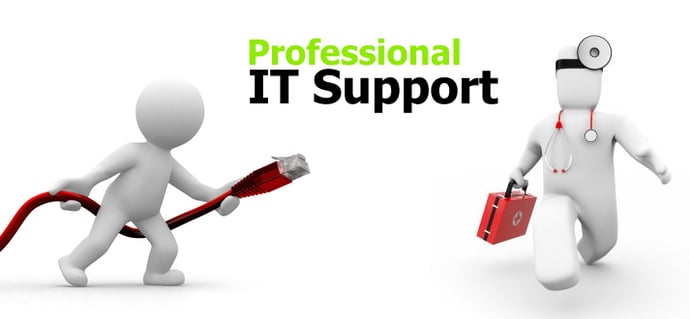Calling on our experience at Triaster in supporting many, many customers to achieve successful BPM implementations, in this article we have set out the key steps to take when preparing for a BPM implementation - in order to best ensure its success.
Set Clear Objectives and Outcomes for Each Stage of the BPM Implementation
Usually when the decision is made to implement a BPM system, the overall objective is clear, perhaps one of the following?
- One source of accurate information
- Support for a quality or industry accreditation
- Perhaps implementation of new quality or HSE system.
- Needing to achieve cost savings
It is important however, to break this overall objective down into prioritised stages.

Image sourced from: infographics.co.uk
Not everything can be achieved at once, so a key preparation step is to break the objective into smaller chunks and set realistic targets for when each one is going to be achieved.
This is important for several reasons:
- A BPM implementation is a significant undertaking and can only be achieved in stages.
- Once into the detail of a BPM implementation it is easy to lose sight of the endgame. A structured plan, with clear targets will keep you on track.
- A BPM implementation can support many objectives; it is important to define what a successful implementation will look like for your organisation.
- Celebrating successes as staging posts are reached will keep everyone involved motivated and on-board.

Image sourced from: gplaw.com.au
Secure Senior Stakeholder Buy-in to the BPM Implementation
As with any project, stakeholder support for a BPM implementation is crucial.
The stakeholders are those who are either inside or outside of your organisation with an interest in the outcome of the implementation. Over the lifetime of the project the stakeholders will be
- Senior Executives
- IT
- Project Team
- Process Experts
- Process Mappers
- End Users
An important part of any BPM implementation will be to secure the buy-in of all of the stakeholders – but it is important to start with your senior executive.

Image sourced from: careersynergy.com
A successful BPM system implementation has a major impact on an organisation and this can only be achieved with core senior support.
This is best achieved by linking the objectives for your BPM system implementation with the strategic corporate objectives for your organisation.
It might be that the link is obvious and is the reason why a BPM system is being implemented, or it might be that the direct connection has not yet been made – in which case, it is really important that you do so.
Start with the language that is familiar to your senior executives – the language of your corporate strategy - and keep focused on the targets and goals that are important to them. Explain how the BPM implementation is going to help achieve these – and of course, make sure that this really is the case. If not, re-examine your objectives.
Don’t get bogged down with the bells and whistles of BPM systems – keep focused on explaining how the BPM implementation is going to support a strategic objective.
For more information on securing senior stakeholder support, please read the following articles:
What problem does Business Process Management (BPM) solve?
Problems with Business Process Management (BPM): Achieving Stakeholder buy-in
Choose your BPM System Wisely
Having established your BPM objectives, keep these firmly in mind when choosing your BPM software system.
Don’t get distracted by the bells and whistle of any BPM system; they aren't useful if they don’t help you to achieve your objectives.

Image sourced from: pxleyes.com
Also, if you involve others in the decision – which is a good way of getting stakeholders on board – ensure that they too make their appraisal according to the agreed objectives. Don’t let their personal agendas steer you off-course.
Consider trialing the system - a really good way of ensuring that it will deliver what you need.
Get IT On-Board with your Chosen BPM System
When buying any software system it is important to have IT on board as early as possible. This is becoming less crucial as more and more software is cloud hosted, but it is still very important. Some organisations have a blanket policy of denying the purchase of cloud hosted software and even where this is not the case, IT will almost certainly have to authorise the purchase.
This can take time, so it is important to start the process early. Then when IT approvals are in place, you are ready to move forward and any IT support that you need, will be available when you need it.

Image sourced from: bellcom.org
For more on this please read the article:
How much time does it take to implement a Business Process Management software system?
Check out your Purchasing Processes
Depending on the purchasing processes at your organisation, buying a BPM system could involve your purchasing department, the formal set up of the vendor on your purchasing system and a formal legal review of the vendors’ terms and conditions. All of which can take quite a bit of time; or it can be a much quicker process.
The key thing is to be clear on what the purchasing process is and how long it will take so that it is started in good time. Otherwise, there is a danger that once you have evaluated several BPM systems and are ready to move forward with purchasing, there will be a delay while the purchasing processes are completed.
Assemble a Great BPM Team
As with any project, having the right team in place to implement a BPM system is crucial.
At Triaster we recommend establishing a Process Council and that this should include:
- Your senior sponsor
- IT support
- Project manager
- Process mappers
- BPM system administrator
- Business analysts
Obviously the senior sponsor and IT support will not be full-time members of the team. However it is helpful to identify them as members of the team and it formalises their support for the BPM implementation. Also if they leave the organisation, the project manager is alerted to replace them as team members at that point, rather than only thinking about this when you need their support.
The Project Manager is often the BPM system administrator, but not always. The BPM system administrator is often a process mapper too, but again not always. Not all process mapper s are always included in the team – particularly if the process mapping involves a lot of people – but there are usually a couple of full time process mappers.

Image sourced from: picdn.net
Business Analysts may or may not be included on the team, depending on the objectives for the BPM implementation.
The first task for the team will be to agree some ground rules for your working approach – these will very much depend on the objectives for your BPM implementation, but they will absolutely save you a great deal of time later.
For more on this, please read this article:
Establishing a Business Improvement Team: 4 Must Do Actions
End Note
We very much hope that you are able to benefit from Triaster’s experience and this article has been helpful to you. If you would like to discuss anything covered directly with us, please do get in contact.
Otherwise, we hope that you will also find the following report helpful too.
Related Articles:
What problem does Business Process Management (BPM) solve?
Problems with Business Process Management (BPM): Achieving Stakeholder buy-in
How much time does it take to implement a Business Process Management software system?
Establishing a Business Improvement Team: 4 Must Do Actions
7 Key Questions to ask when shopping for Business Process Management (BPM) software
How much does Business Process Management (BPM) software cost?
Written by Emma Harris
Emma was Operations Director for Triaster for nearly 20 years, during which time as well as learning and perfecting her BPM and process improvement skills, she honed her inbound marketing expertise. She now runs D2e - Designed to engage - which designs and develops bespoke, engaging, HubSpot CMS websites, that help your entire company to grow and scale. She is delighted to still be delivering Triaster's marketing, whilst also helping other companies turn their websites into their hardest working asset.

